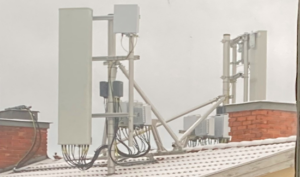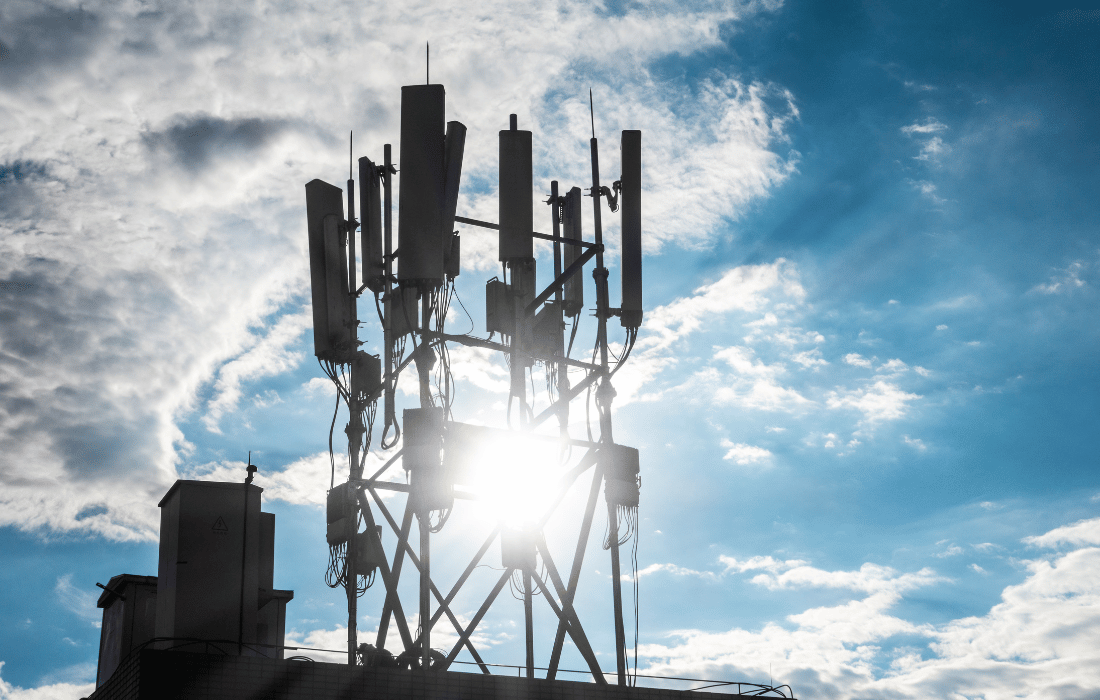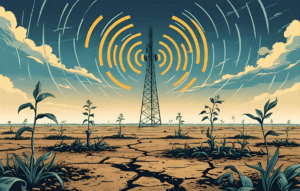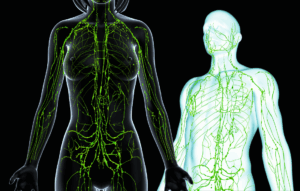The world is quickly embracing the fifth generation of wireless communication, known as 5G, promising faster internet speeds, more reliable connections, and the advent of smart cities. However, as with many technological advancements, there is a growing concern among “We the People” about the potential health risks associated with 5G radiation. Today we will focus our attention on the troubling case of a 49-year-old man who developed severe “microwave syndrome”, better known as electrohypersensitivity (EHS), after a 5G base station was installed 20 meters from his apartment. Through this case, we unpack into the broader implications of 5G radiation on human health and the urgent need for precautionary measures.
Convenience and Hazard of 5G
5G technology, praised as the backbone of future communications, offers remarkable speed and connectivity. It operates primarily in the 3.5 GHz band, significantly higher than previous generations. This high-frequency range enables faster data transfer but also raises concerns about its impact on health. Unlike the thermal effects of RF radiation, which cause tissue heating, non-thermal effects at these frequencies are less understood but potentially more harmful.
Case Study: A Man’s Battle with Microwave Syndrome
The case report by Mona Nilsson and Lennart Hardell presents a compelling story of a 49-year-old man who experienced debilitating health issues following the activation of a 5G base station near his home. Before the installation, he was in good health, experiencing only minor issues like mild headaches and occasional fatigue. However, this changed dramatically after the 5G base station became operational.
Initial Symptoms and Severity

Shortly after the 5G activation, the man reported severe headaches, abnormal sensations (dysesthesia), memory loss, irregular pulse, chest pain, and burning skin sensations. These symptoms, collectively known as microwave syndrome, are consistent with exposure to non-thermal RF radiation. His health deteriorated rapidly, leading him to fear for his life and prompting a move to a different apartment with significantly lower RF radiation levels.
Measuring RF Radiation Levels

Measurements in the man’s apartment revealed extraordinarily high levels of RF radiation, especially in the living room and his daughter’s bedroom. These levels, while below the ICNIRP’s safety limits, were sufficient to cause severe health issues. The peak levels reached the maximum measurable limit of 3,180,000 μW/m² within seconds during measurements, highlighting the intensity of the radiation exposure.
Understanding “Microwave Syndrome” or EHS
Microwave syndrome, better known as electrohypersensitivity (EHS) or radiofrequency sickness, encompasses a variety of symptoms resulting from exposure to RF radiation. This syndrome has been documented since the 1960s, particularly in Eastern European countries. Common symptoms include fatigue, dizziness, sleep disorders, anxiety, attention and memory problems, and cardiovascular issues.
Historical Context

Historically, workers exposed to RF radiation reported a wide range of health issues, leading to early studies on the non-thermal effects of microwave radiation. These studies found that modulation and pulsation of the RF signal, as well as the peak and average intensities, played a crucial role in the severity of the symptoms. Over time, exposure to multiple frequencies and pulsed signals was found to be particularly hazardous.
Health Impacts Near Base Stations
Numerous studies have investigated the health effects of living near mobile phone masts or base stations. A 2022 review found that a significant number of these studies reported symptoms consistent with microwave syndrome among people living near these installations. Similarly, several studies reported increased cancer risks and changes in biochemical markers.
Specific Studies on 5G Base Stations
Nilsson and Hardell’s research is among the first to focus specifically on the health effects of 5G base stations. In previous case studies, individuals exposed to 5G radiation experienced rapid onset of microwave syndrome symptoms, which improved when they moved to areas with lower RF radiation levels. These findings underscore the need for further research and a precautionary approach to 5G deployment.
Detailed Analysis of the 49-Year-Old Man’s Experience
Pre-Activation Health
Before the 5G base station was activated, the man experienced only minor health issues, such as mild headaches, occasional fatigue, and sleep difficulties. These were manageable and did not significantly impact his daily life.
Post-Activation Health Decline
 Following the activation of the 5G base station, the man’s health deteriorated rapidly. The severity of his symptoms increased, leading to extreme headaches, tingling sensations throughout his body, dry eyes, chest pain, and swelling. The slightest physical effort exacerbated his symptoms, causing pain and discomfort. This severe decline in health prompted him to move to a different apartment with lower RF radiation levels.
Following the activation of the 5G base station, the man’s health deteriorated rapidly. The severity of his symptoms increased, leading to extreme headaches, tingling sensations throughout his body, dry eyes, chest pain, and swelling. The slightest physical effort exacerbated his symptoms, causing pain and discomfort. This severe decline in health prompted him to move to a different apartment with lower RF radiation levels.
Improvements After Moving
Upon moving to a new dwelling with significantly lower RF radiation levels, the man’s health improved dramatically. His severe symptoms subsided, although he noticed increased sensitivity to RF radiation, with symptoms reappearing whenever he visited his previous apartment. This increased sensitivity suggests a cumulative effect of prolonged exposure to high levels of RF radiation.
Broader Implications for Public Health
The case study of the 49-year-old man is not an isolated incident. It highlights a broader public health issue that requires urgent attention. The rapid deployment of 5G technology has outpaced research on its long-term health effects, leaving the public vulnerable to potential risks.
Connecting Microwave Syndrome with Havana Syndrome
The exploration of microwave syndrome naturally leads to a discussion about Havana Syndrome, a perplexing condition affecting U.S. government personnel and their families stationed abroad. Havana Syndrome, first reported in Havana, Cuba, in late 2016, presents with symptoms that closely resemble those of microwave syndrome: hearing strange noises, head pressure, headaches, dizziness, and cognitive dysfunction.
Understanding Havana Syndrome
Havana Syndrome has sparked numerous investigations, theories, and debates. Initially suspected to be the result of sonic attacks, later theories proposed that directed-energy weapons, such as microwave radiation, might be responsible. The National Academies of Sciences, Engineering, and Medicine (NASEM) concluded that “directed, pulsed radio frequency energy” could plausibly explain some of the symptoms reported by U.S. personnel.
To learn more about Havana Syndrome, read my extensive article on the mysterious uptick in cases of military personnel worldwide.
Precautionary Measures and Regulatory Gaps
Current safety guidelines, such as those from the ICNIRP, are based primarily on the thermal effects of RF radiation and do not adequately address non-thermal effects. These guidelines are widely adopted despite growing evidence of harm from non-thermal exposure. This regulatory gap highlights the need for updated safety standards that consider the latest scientific findings.
The Urgent Need for EMF Protection

Given the potential health risks associated with 5G radiation, it is crucial to take proactive measures to protect oneself from RF exposure. The most effective solution I have found is the use of EMF protection devices from Aires Tech, which offers a range of products designed to neutralize electromagnetic fields, thereby reducing the harmful effects of RF radiation on the body.
Benefits of Aires Tech Products

Aires Tech products work by neutralizing harmful RF radiation and creating a safer environment for individuals exposed to electromagnetic fields. By incorporating these devices into daily life, individuals can protect themselves from the damaging health effects of 5G and other wireless technologies. These products are particularly beneficial for those living near base stations or in areas with high levels of RF radiation.
The Role of Aires Tech in Mitigating Health Risks
Given the potential dangers of RF radiation, it is essential to consider protective solutions. Aires Tech’s EMF protection devices, originally designed for military personnel dealing with radiation sickness, offer a practical and effective means of reducing exposure to harmful electromagnetic fields. These devices work by neutralizing the detrimental effects of RF radiation, providing a safer environment for individuals living near 5G base stations or everyday people like myself using wireless technologies.
Moving Forward
The deployment of 5G technology offers numerous benefits but also poses significant health risks that must not be ignored. The case of the 49-year-old man who developed severe microwave syndrome underscores the urgent need for further research and a precautionary approach to 5G implementation. Protecting public health should be a priority, and the use of EMF protection devices like those from Aires Tech can play a crucial role in safeguarding against the potential dangers of RF radiation.













